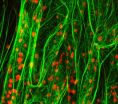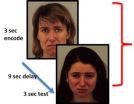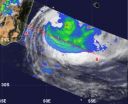(Press-News.org) Gravity affects the ecology and evolution of every living organism. In plants, the general response to gravity is well known: their roots respond positively, growing down, into the soil, and their stems respond negatively, growing upward, to reach the sunlight. But how do plants sense gravity and how do they direct or signal their cells to grow in response to it? Although botanists understand a great deal about how this works, a recent article in the recent issue of the American Journal of Botany reviews what we know so far, from mechanical to genetic approaches; it reveals that there are still substantial gaps in our knowledge of the molecular details and highlights new ideas for potential regulating mechanisms.
One of the most constant environmental stimuli that a plant encounters is gravity. Elison Blancaflor, author of the article and a Professor in the Plant Biology Division at the Samuel Roberts Noble Foundation, Oklahoma, is particularly interested in the effects that gravity has on plant development, and especially in its pivotal role in the evolution of a plant's sensory and signaling system.
"Although the process of gravitropism—defined as the downward growth of the plant root so it can explore the soil better for nutrients and water and the upward growth of the plant shoots to maximize light absorption—appears to be a simple plant response that we observe here on earth, the biological processes that control it are rather complex," notes Blancaflor.
Indeed, Blancaflor explains in his review article that gravitropism requires the coordinated activity of different cell and tissue types. In plants, the area where gravity is sensed is often spatially distinct from the area of growth. So how do these two discrete areas communicate with each other and direct the plant to where it should grow?
To date, gravity sensing in plants has been explained by the starch-statolith hypothesis. For example, in roots, gravity-sensing cells at the tip of the root contain dense, starch-filled organelles known as amyloplasts. Amyloplasts settle to the bottom of the cells in response to gravity, which then triggers the hormone auxin to move to another, distinct, area of cells and causes them to elongate and bend toward gravity. However, the molecular details of exactly how the physical movement and settling of amyloplasts in one set of cells triggers the accumulation of auxin in another, physically distant, set of cells in a plant remains a mystery.
The most prevalent current hypothesis is that the cytoskeleton, or cellular scaffolding, plays a major role in this gravity-sensing, intercellular communication; the cytoskeleton is made up of filaments, consisting of the proteins actin or tubulin, that allow movement of materials along strands, such as is seen in meiosis or mitosis. However, there is a major controversy in the field regarding the role of actin in gravitropism primarily due to contradictory outcomes in studies where actin was inhibited—the most interesting ones, according to Blancaflor, being those where actin disruption actually led to enhanced gravitropism.
Blancaflor tackles this controversy by reviewing what we know regarding how amyloplasts work, what affects actin, and how recent genetic studies have discovered that proteins may regulate actin and therefore auxin distribution. For example, recent genetic work using the model plant, Arabidopsis, reveals potential mechanisms as to how the actin cytoskeleton connects the gravity sensing cells to auxin in the growing cells.
Although Blancaflor's review article specifically discusses, based on years of research, how one component of the plant cell, namely the cytoskeleton, controls the process of plant gravitropism, he notes that understanding gravitropism has important implications for agriculture as well.
"Information from basic studies on the cytoskeleton and how plants respond to gravity," he comments, "can inform and provide strategies for genetically engineering crop plants with improved root systems or overall plant architecture."
Blancaflor's interest in gravitropism goes even beyond this earth's atmosphere and into space: "The research I discuss in this article has led me to explore how minimal gravity impacts plant growth and development, and to ask if, like on earth, the actin cytoskeleton also contributes to plant growth in space where gravity is reduced."
Indeed, Blancaflor has conducted research on the Space Shuttle and will have some upcoming experiments on the International Space Station (ISS) this year related to the topic he reviews in this special issue article.
INFORMATION:
Blancaflor Elison B. 2013. Regulation of plant gravity sensing and signaling by the actin cytoskeleton. American Journal of Botany 100(1): 143-152. DOI: 10.3732/ajb.1200283
The full article in the link mentioned is available for no charge for 30 days following the date of this summary at http://www.amjbot.org/content/100/1/143.full.pdf+html. After this date, reporters may contact Richard Hund at ajb@botany.org for a copy of the article.
The Botanical Society of America is a non-profit membership society with a mission to promote botany, the field of basic science dealing with the study and inquiry into the form, function, development, diversity, reproduction, evolution, and uses of plants and their interactions within the biosphere. It has published the American Journal of Botany for nearly 100 years. In 2009, the Special Libraries Association named the American Journal of Botany one of the Top 10 Most Influential Journals of the Century in the field of Biology and Medicine.
For further information, please contact the AJB staff at ajb@botany.org.
How plants sense gravity -- a new look at the roles of genetics and the cytoskeleton
2013-02-05
ELSE PRESS RELEASES FROM THIS DATE:
Some cancer mutations slow tumor growth
2013-02-05
CAMBRIDGE, MA -- A typical cancer cell has thousands of mutations scattered throughout its genome and hundreds of mutated genes. However, only a handful of those genes, known as drivers, are responsible for cancerous traits such as uncontrolled growth. Cancer biologists have largely ignored the other mutations, believing they had little or no impact on cancer progression.
But a new study from MIT, Harvard University, the Broad Institute and Brigham and Women's Hospital reveals, for the first time, that these so-called passenger mutations are not just along for the ride. ...
Early breast cancer diagnosis, survival rates low in rural India
2013-02-05
ANN ARBOR—Women in developed countries survive roughly 10 years longer after a breast cancer diagnosis compared to women in poor-to-middle-income countries, a new University of Michigan study suggests.
The report demonstrates the lack of access to good health care faced by women in poor countries, said the study's principal investigator Rajesh Balkrishnan, an associate professor at the U-M schools of Pharmacy and Public Health.
Early diagnosis and sustained treatment were the biggest hurdles and also the main indicators of patient survival, he said.
Balkrishnan and ...
Imaging biomarker predicts response to rapid antidepressant
2013-02-05
VIDEO:
NIMH's Dr. Maura Furey talks about how a functional brain imaging measure may help predict a patient's response to a rapid-acting experimental antidepressant.
Click here for more information.
A telltale boost of activity at the back of the brain while processing emotional information predicted whether depressed patients would respond to an experimental rapid-acting antidepressant, a National Institutes of Health study has found.
"We have discovered a potential ...
Children with autism at significant risk for feeding problems and nutritional deficits
2013-02-05
Healthy eating not only promotes growth and development, but also provides important opportunities for children to socialize during meals. A new, comprehensive analysis of feeding behavior in children with autism spectrum disorders (ASD) indicates that these children are five times more likely to have a feeding problem, including extreme tantrums during meals, severe food selectivity and ritualistic mealtime behaviors.
Researchers at Marcus Autism Center and the Department of Pediatrics at Emory University School of Medicine conducted a comprehensive meta-analysis of ...
NOAA: Tortugas marine reserve yields more, larger fish
2013-02-05
A new NOAA research report finds that both fish populations and commercial and recreational anglers have benefited from "no-take" protections in the Tortugas Ecological Reserve in the Florida Keys National Marine Sanctuary.
The report, "An Integrated Biogeographic Assessment of Reef Fish Populations and Fisheries in Dry Tortugas: Effects of No-take Reserves," is the first to evaluate how the 151-square nautical mile Tortugas Ecological Reserve affects the living marine resources of the region and the people whose livelihoods are connected to them.
The report's analysis ...
Low vitamin D levels may increase risk of Type 1 diabetes
2013-02-05
Boston, MA – Having adequate levels of vitamin D during young adulthood may reduce the risk of adult-onset type 1 diabetes by as much as 50%, according to researchers at Harvard School of Public Health (HSPH). The findings, if confirmed in future studies, could lead to a role for vitamin D supplementation in preventing this serious autoimmune disease in adults. The study was published online February 3, 2013 and will appear in the March 1 print edition of the American Journal of Epidemiology.
"It is surprising that a serious disease such as type 1 diabetes could perhaps ...
Climate change impacts to US coasts threaten public health, safety and economy
2013-02-05
According to a new technical report, the effects of climate change will continue to threaten the health and vitality of U.S. coastal communities' social, economic and natural systems. The report, Coastal Impacts, Adaptation, and Vulnerabilities: a technical input to the 2013 National Climate Assessment, authored by leading scientists and experts, emphasizes the need for increased coordination and planning to ensure U.S. coastal communities are resilient against the effects of climate change.
The recently-released report examines and describes climate change impacts on ...
Scientists find a key element of lupus, suggesting better drug targets
2013-02-05
LA JOLLA, CA – February 4, 2013 – A team led by scientists at The Scripps Research Institute (TSRI) has identified specific cellular events that appear key to lupus, a debilitating autoimmune disease that afflicts tens of millions of people worldwide. The findings suggest that blocking this pathway in lupus-triggering cells could be a potent weapon against the disease.
In the new study, described in an online Early Edition of the Proceedings of the National Academy of Sciences the week of February 4, 2013, the researchers determined that the absence of a certain type ...
Polar bear researchers urge governments to act now and save the species
2013-02-05
(Edmonton) A University of Alberta polar bear researcher along with eleven international co-authors are urging governments to start planning for rapid Arctic ecosystem change to deal with a climate change catastrophe for the animals.
U of A professor Andrew Derocher co-authored a policy perspective in the journal Conservation Letters urging governments with polar bear populations to accept that just one unexpected jump in Arctic warming trends could send some polar bear populations into a precipitous decline.
"It's a fact that early sea ice break-up and late ice freeze-up ...
NASA sees the falling of Cyclone Felleng
2013-02-05
Cyclone Felleng traveled through the Mozambique Channel during the week of Jan. 28, 2013 and emerged south into the Southern Indian Ocean where it transitioned into a cold core low pressure area. NASA's TRMM satellite captured a look at the rainfall rates occurring in Felleng as it was making that transition on Feb. 1.
NASA's Tropical Rainfall Measuring Mission (TRMM) satellite flew over Cyclone Felleng on Feb. 1 at 1648 UTC (11:48 a.m. EST) as it was exiting the Mozambique Channel and becoming extra-tropical. TRMM measured a small area of heavy rainfall east of the center ...



